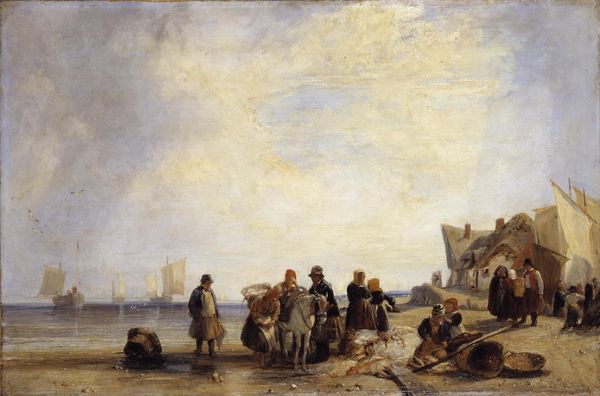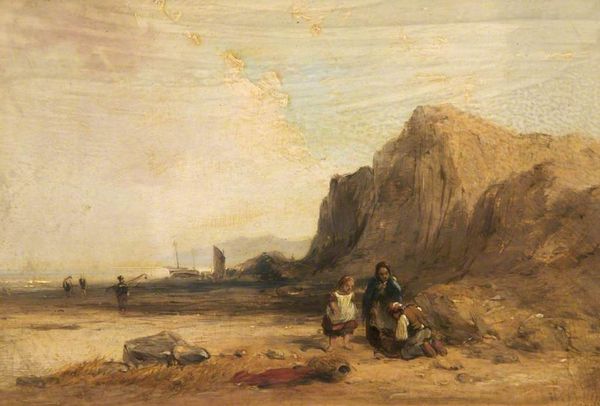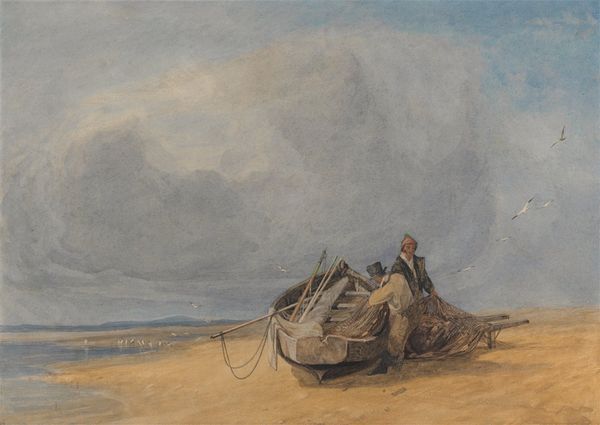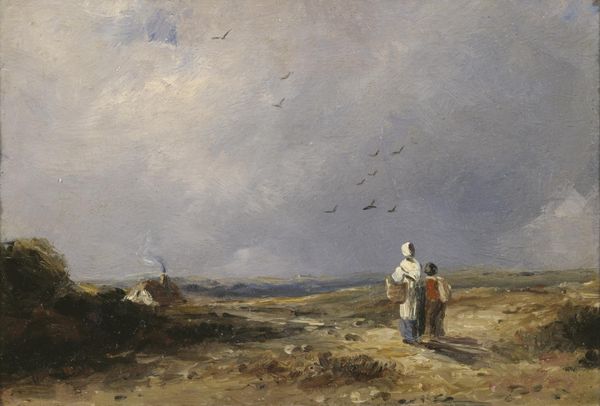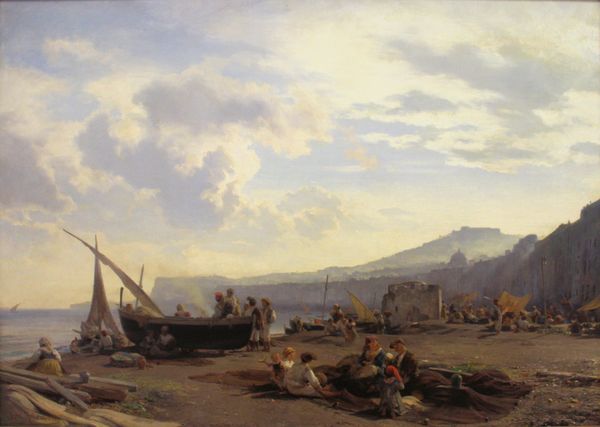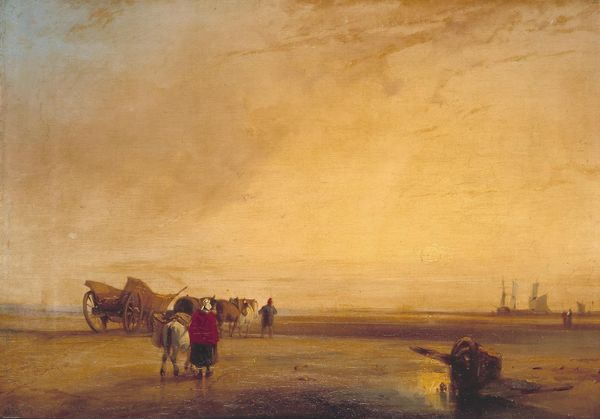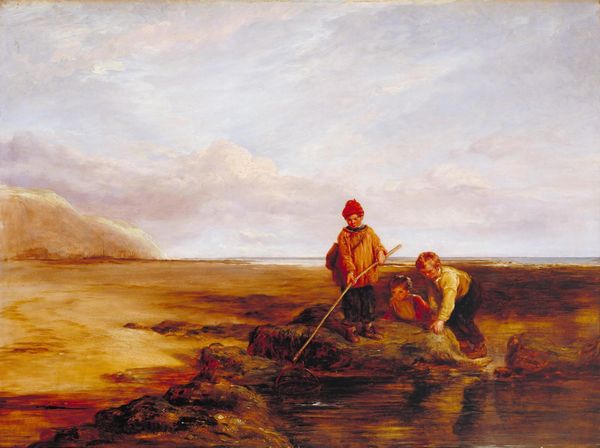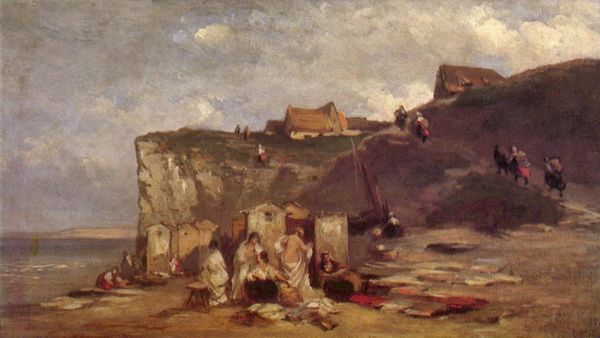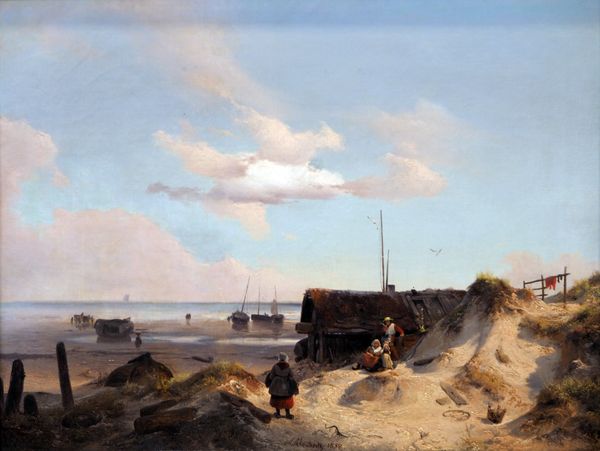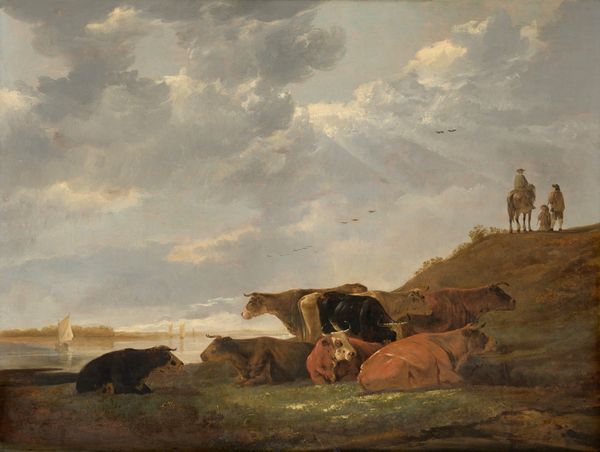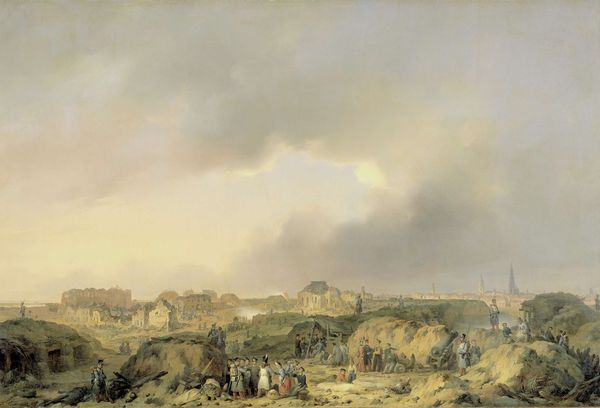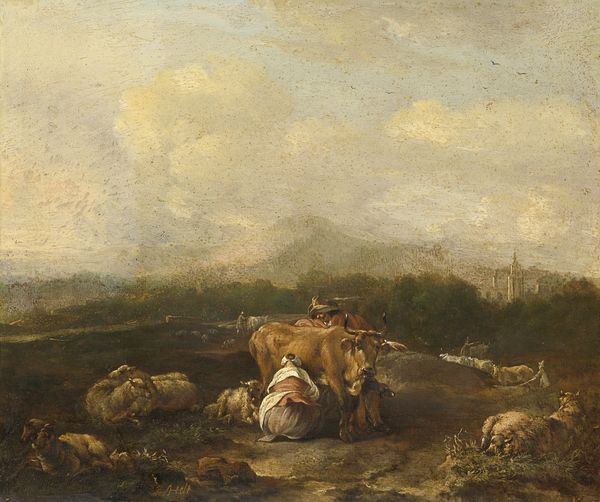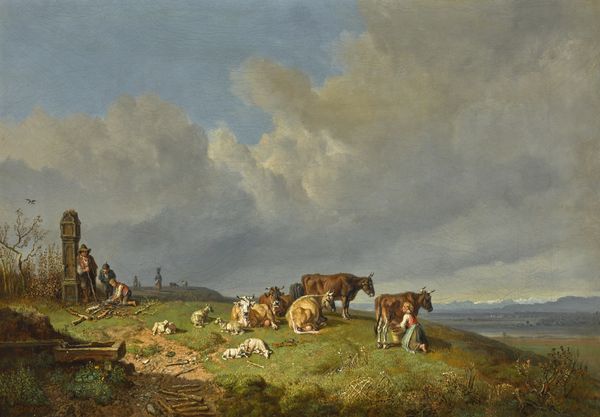
Dimensions: support: 213 x 342 mm
Copyright: CC-BY-NC-ND 4.0 DEED, Photo: Tate
Curator: Richard Parkes Bonington, a master of light and atmosphere, painted this watercolor, titled "A Scene on the French Coast." It's currently held in the Tate Collections. Editor: It's got a melancholic mood, right? The muted palette and the vastness of the sky—it feels both expansive and strangely claustrophobic. Curator: Indeed. The composition emphasizes horizontality, which contributes to that sense of expanse. The artist uses layering and transparency to convey depth and atmospheric perspective. Editor: The figures seem a bit lost, don’t they? Kind of swallowed up by the landscape, which to me emphasizes the human connection to nature. Curator: Semiotically, the figures and the coastal setting construct a narrative of human activity intertwined with the natural environment, reflecting Bonington's exploration of Romantic themes. Editor: It's a thoughtful piece, makes you think about the smallness of life. Curator: A perfect example of Bonington's ability to weave visual poetry. Editor: Absolutely, it's amazing how many stories can be told in watercolor.
Comments
tate 8 months ago
⋮
http://www.tate.org.uk/art/artworks/bonington-a-scene-on-the-french-coast-t03857
Join the conversation
Join millions of artists and users on Artera today and experience the ultimate creative platform.
tate 8 months ago
⋮
Bonington was English by birth but moved with his family to Calais in 1817. Although he trained in France he specialised in watercolour, which was then regarded as a specifically English medium, but he was also a gifted oil painter. He is important in the context of the French landscape tradition, and the many pictures that he produced of the north coast of France provided important precedents for such artists as Eugène Boudin (1824-98) and Claude Monet. (1840-1926), working on the Normandy coast in the second half of the nineteenth century. In his seascapes Bonington often combines a sense of spontaneity and atmospheric spaciousness with close observation. The location for this particular watercolour has not been identified, but it could be either Dieppe or Boulogne. The foreground is occupied by a small group of children, young fisherfolk, sitting in the sun. An overturned basket has spilled its cargo of fish onto the sand and a large ray lies steeped in a bowl of water, waiting to be cleaned. The girls' red and yellow hoods provide strong colour notes that are picked up in the retreating figures and the roofs of the houses in the left background and repeated in the baskets, the sand and the opalescent flesh of the fish. The scene is bathed in a golden light, which perhaps points to the influence of Dutch art and especially the work of the seventeenth century artist Albert Cuyp (1620-91). Two-thirds of the picture space is devoted to sky. Bonington was fascinated by the changing light and atmospheric effects on the north coast of France. Bonington achieved success and recognition at the Paris Salon of 1824, which greatly boosted his reputation, and the numerous versions of his work of this period give an indication of his increasing popularity. He created another version of this scene in oil, but with a stormier, pinkish sky, which was acquired by the Duke of Bedford after a visit to Bonington's studio in c.1825-6. A smaller oil version also exists and is now in a private collection. Further reading:Malcolm Cormack, Bonington, Oxford 1989, p.100, oil version reproduced pl.5, p.15, in colour.Patrick Noon, Richard Parkes Bonington 'On the Pleasure of Painting', New Haven and London 1991, pp.241-2, oil version reproduced p.241, in colour.The Tate Gallery 1984-86: Illustrated Catalogue of Acquisitions 1984-86 including supplement to catalogue of acquisitions 1982-84, Tate Gallery, London 1988, p.10, reproduced p.10. Frances FowleDecember 2000
